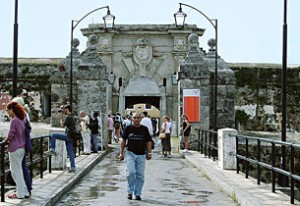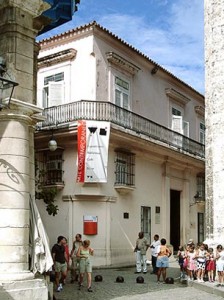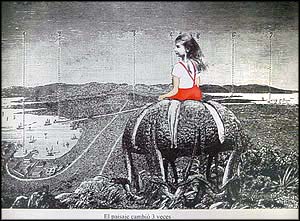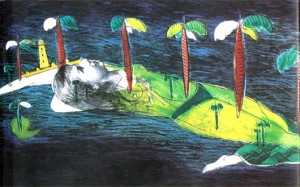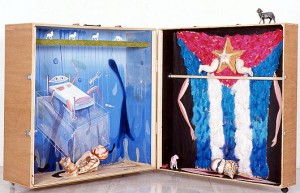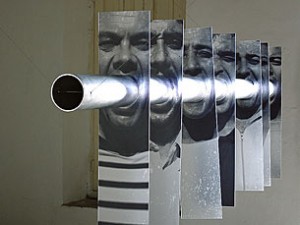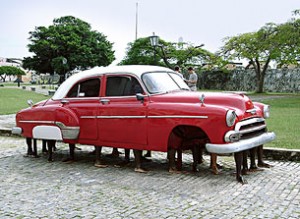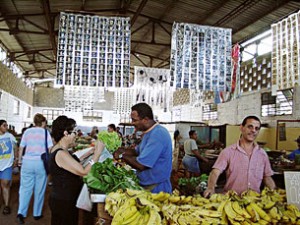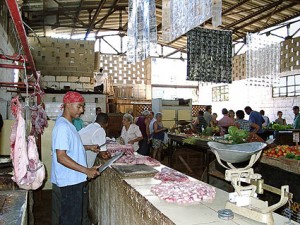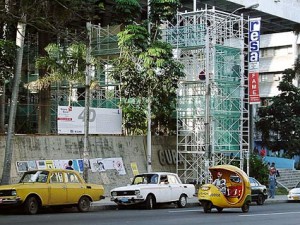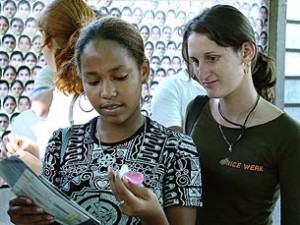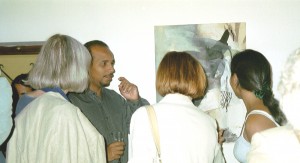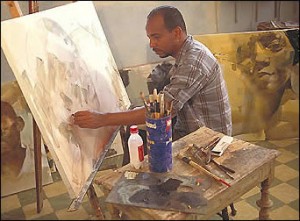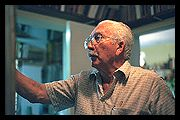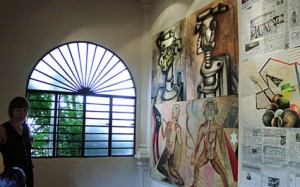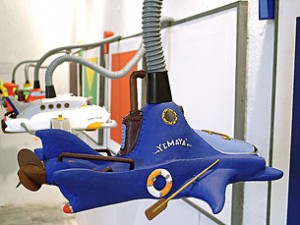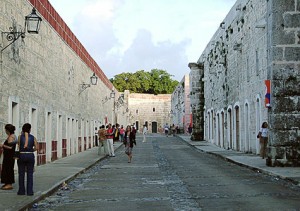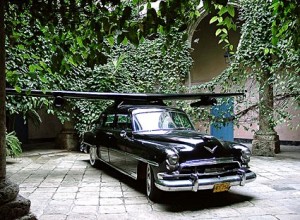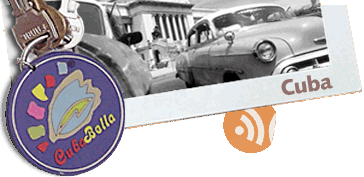HAVANA TO HOST INTERNATIONAL ART SHOW NEXT MONTH
From March 27 to April 30, 2009, the 10th Havana Biennial, an event featuring visual artwork from both Cuban and international artists, will be held at various sites within the Cuban capital, organized by the Wilfredo Lam Contemporary Art Center. When the Havana Biennial first took place in 1984, its agenda was to drum up Third World artwork to First World art aficionados. This time around, the Havana Biennial is reportedly showcasing works by over 150 artists from 50 countries, as well as from Cuba.
Those artists from Cuba include Ángel Alonso, Abel Barroso, the duet Reinerio Tamayo-Eulises Niebla, Glenda León, Luis Gómez, Alexandre Arrechea, Inti Hernández, Juan Carlos Rodríguez, Yoan Capote, Nelson Ramírez de Arellano-Luidmila Velasco, Fernando Rodríguez, Ricardo Elías, José Angel Toirac-Meira, Marrero-Loring McAlping, Wilfredo Prieto, Lissette Castillo and the duet Felipe Dulzaides-Roberto Gottardi.
(Sampling of paintings by Cuban artist Sandra Ramos, represented by Promo-Arte gallery, Tokyo, Japan)
Also, despite the legendary diplomatic saber-rattling that Cuba often conducts with the U.S. government, there will be an American presence as well. One of the major art exhibitions that will be held there, “Chelsea Visits Havana”, is being put together by New York-based art dealers Alberto Magnan and Dara Metz (of the Magnan Projects gallery) on behalf of the New York-based non-profit group Fundación Amistad – whose founder, Maria de Lourdes “Luly” Duke (who married herself into the wealthy Duke family in the mid-1970s) has long used artistic & cultural exchanges in her organization’s efforts to improve relations between Cuba and the U.S. That exhibit, consisting of photography, painting, film and installations, will be held at the Museo Nacional de Bellas Artes in Havana.
(Visual artworks from 8th Havana Biennial in 2003)
Along with the Museo Nacional, those visiting Havana at that time can expect the Biennial to use various venues to exhibit a range of visual artworks, such as the historic Fortaleza de San Carlos de la Cabaña, Castillo de los Tres Reyes del Morro, Casa de las Américas at Havana’s Vedado section, as well as various sites within Habana Vieja, such as Plaza Vieja, La Casona, and the Wilfredo Lam Contemporary Art Center itself. At a previous Biennial in 2003, certain parts of the busy Vedado boulevard La Rampa were used for outdoor exhibits. Even a local market in the Vedado section played host to visual art exhibits (see photos here).
(Local market in Havana’s Vedado section — used by 8th Havana Biennial for visual artistic displays)
(Site at La Rampa, Vedado section of Havana, used during the 8th Havana Biennial)
Despite Cuba’s perceived anti-capitalist bias, the Biennial will reflect a trend that’s already been taking in both Havana and overseas – the growing marketability of contemporary Cuban artwork in the U.S., Europe and elsewhere. Galleries located in cities as varied as Miami, Zurich and Tokyo have not only used their art spaces to exhibit emerging and established Cuban artists, but have been selling them to interested international art collectors as well. Those galleries include Promo-Arte in Tokyo (www.promo-arte.com), Nevartos AG in Zurich (www.cubanfineart.com) and Cernuda Arte in Coral Gables (Miami), Florida (www.cernudaarte.com).
(Cuban artist Francisco Nunez — represented by Nevartos AG / Switzerland)
(Other artists represented by Nevartos AG /Switzerland include José López Alvarez (Lopito) and Eduardo Expósito)
Ironically, the U.S. Treasury Department’s OFAC section (which enforces the U.S. trade embargo against Cuba, as well as the U.S. travel ban — which penalizes U.S. citizens who have conducted unlicensed trips to Cuba) lets returning American travelers bring in Cuban artworks unfettered, since it is viewed as “informational materials” – unlike more typical Cuban products, like cigars and rum, which are viewed as commercial materials subject to seizure.
This would explain a March 2008 Wall Street Journal article, “The Cuban Art Revolution”, which mentions American collectors of contemporary Cuban art, such as software developer Peter Norton, philanthropist Beth Rudin DeWoody, real estate developer Craig Robins (responsible for the creation of the Design District in North Miami, Florida) and Howard Farber (a Miami businessman who previous profited from the video rental business):
http://s.wsj.net/article/SB120613745916555929.html
That article stated that Americans make up at least a third and perhaps as high as 80% of international buyers of artwork in Cuba — the Journal noting that such collectors are attempting to acquire their own inventory of such artworks before the lifting of U.S. travel restrictions (or perhaps even the embargo altogether) render them more easily available to future American travelers.
Some years back, Havana was known among art collectors as a place where one can buy Cuban paintings (for example) for just hundreds of dollars and resell them elsewhere for thousands of dollars. With Cuba-based artists becoming better-aware of their works’ marketability overseas, Havana may no longer hold its reputation for offering bargain-basement prices for quality artwork. Nevertheless, it is likely that visitors who happen to be at the Biennial next month may invest a few dollars in Cuban art and bring back a painting or two. Some may have a future auction at a prestigious art house in mind for such a resale. In May 2007, Sotheby’s sold a modernist painting, “Danza Afro-Cubana” by Mario Carreño for US$2.6 million.
For more info, contact:
Centro de Arte Contemporáneo Wifredo Lam
San Ignacio 22,
esquina a Empedrado
Plaza de la Catedral
La Habana Vieja / Cuba
Email: secretaria@wlam.cult.cu
Website: www.bienalhabana.cult.cu
(Other images from 8th Havana Biennial)

